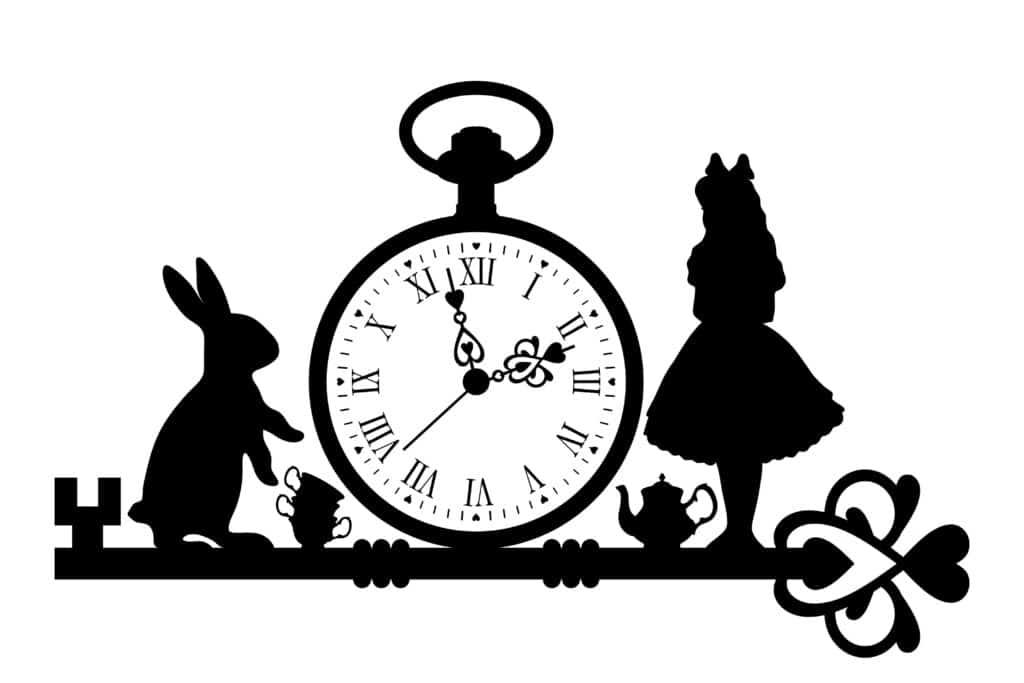
Between his abdominal attacks every three to five months, the patient experiences visual phenomena, or hallucinations, lasting longer than a week. He sees objects that suddenly change to seem small and distant or large and up close. His own body transforms in front of him, making him feel extremely heavy or very small. Sometimes he sees people as no taller than his index finger. Other times he feels as if he is shrinking because everything around him looks so big. Noises change from very loud to very faint.
He has migraine attacks after these hallucinations. Pain throbs in his head. His eyes redden. Strange lights flash. He becomes giddy for about 15 minutes. He then sinks into misery.
Other members of his family have these classical migraines. While the migraines run in his family, the hallucinations and abdominal pain do not.
The patient’s hallucinations are a symptom of Alice in Wonderland Syndrome, or AIWS. AIWS is a rare syndrome suspected to have a link to migraines as its cause. It’s also thought to be caused by infections, seizures, strokes, medications or drugs, or some mental health conditions.
AIWS is prevalent in children and often goes away by adulthood. A few symptoms of AIWS include: micropsia (objects appearing too small), macropsia (objects appearing too large), lilliputianism (people appear too small), zoopsia (hallucinations of people and animals), and metamorphopsia (objects become distorted).
A psychiatrist named John Todd first diagnosed and gave AIWS its name in 1955, after studying seven migraine sufferers with unusual distortions of body image. He named AIWS after Alice’s Adventures in Wonderland by Lewis Carroll, who wrote that he suffered from migraines and hallucinations as early as 1856. Carroll’s experience with migraines and visual distortion gave him the idea behind his famous novel.
Since 1955, there have only been about 170 cases of AIWS reported through medical and research literature, making this a rarely seen and likely misdiagnosed syndrome. Almost 30% of these reported cases have the cause listed as migraine, making migraine the most common cause of AIWS.
Patients who experience AIWS know what they’re seeing is not real unlike those with psychosis. Accounts from AIWS sufferers describe feeling strangely light-headed, as if they’re on laughing gas, and being aware that something is not right.
Most sufferers are children and young adults when they experience AIWS, and it occurs typically at night. They then feel terrified, anxious, and panic-stricken during and after attacks. Hallucinations can occur several times a day.
For those suffering AIWS attacks who have migraines, scientists suggest neurophysiologic changes during a migraine could trigger these attacks. Chemicals in the brain create visual disturbances that cause the symptoms of AIWS. Most patients experience AIWS symptoms before the migraine sets in, with or without head pain.
Treatment for AIWS includes treating the disorder it derives from, whether it’s a migraine or anything else. Treating the migraine includes taking antidepressants, pain medication, calcium channel blockers or beta-blockers. There is no direct treatment or cure for AIWS.
Researchers still work to understand AIWS. The International Classification of Headache Disorders, a breakthrough tool since 1988 for physicians treating neurological disorders, has yet to include AIWS and other migraine variants in its list of migraines and symptoms.
Sources and More Information
Cleveland Clinic, “Alice in Wonderland Syndrome” https://my.clevelandclinic.org/health/diseases/24491-alice-in-wonderland-syndrome-aiws
Hamed, S. “A migraine variant with abdominal colic and Alice in Wonderland Syndrome: a case report and review” BMC Neurology 10:2. Doi: 10.1186/1471-2377-10-2
Mastria, G., Mancini, V, Vigano, A, Di Piero, V. “Alice in Wonderland Syndrome: A Clinical and Pathophysiological Review” National Library of Medicine – National Center for Biotechnology Information & PubMed.
https://www.ncbi.nlm.nih.gov/pmc/articles/PMC5223006/#:~:text=Although%.
Weissenstein A., Luchter, E., Bittman M.A. “Alice in Wonderland syndrome: A rare neurological manifestation with microscopy in a 6-year-old child.” National Library of Medicine – National Center for Biotechnology Information & PubMed. https://www.ncbi.nlm.nih.gov/pmc/articles/PMC4302569/#:~:text=Alice%20in%
20wonderland%20syndrome%20(AIWS,common%20perceptions%20are%20at%20night.

